Complete Solutions to Worked out Examples of chapter GEOMETRICAL OPTICS of Class 12 book with complete answers and questions
| Class 12 | PHYSICS |
| Chapter | GEOMETRICAL OPTICS |
| HC VERMA | Worked out Examples |
| Number Of Questions | 28 |
| Academic Year | 2023-24 |
An object is placed on the principal axis of concave mirror of focal length 10 cm at a distance of 8.0 cm from the pole. Find the position and the nature of the image.
02:05View SolutionA rod of length 10 cm lies along the principal axis of a concave mirror of focal length 10 cm in such a way that its end closer to the pole is 20 cm away from the mirror. The length of the image is,
03:31View SolutionAt what distance from a convex mirror of focal length 2.5 m should a body stand so that his image has a height equal to half the original height ? The height of object is perpendicular to the principal axis .
02:48View SolutionA 2.0 cm high object is placed on the principal axis of a concave mirror at a distance of 12 cm from the pole. Ilf the image is inverted, real and 5.0 cm high, find the location of the image the focal length of the mirror.
03:17View SolutionConsider the situation shown in figure. Find the maximum angle theta for which the light suffers total internal reflection at the vertical surface.
02:37View SolutionA right prism is to be made by selecting a proper material and the angles A and B `(BleA)` as shown in figure. It is desired that a ray of light incident normally on AB emerges parallel to the incident direction after two internal reflection.a. What should be the minimum refractive index `mu` for this to be possible? b. `For mu=5/3` is it possible to achieve this with the angle A equal to 60 degrees?
01:38View SolutionA point object O is placed in fornt of a transparent slab at a distance x from its surface. It is seenfrom the other side of he slab by light incident nearlyl normally to the slab. The thickness of the slab is t and its refractive index is `mu`. Show that the apparent shift in the position of the object is independent of x and find its value.
04:20View SolutionConsider the situation shown in figure. A plane mirror is fixed at a height h above the bottom of a beaker containing water (refractive index `mu`) up of a bottom formed by the mirror.Find the position of the image of bottom formed by the mirror.
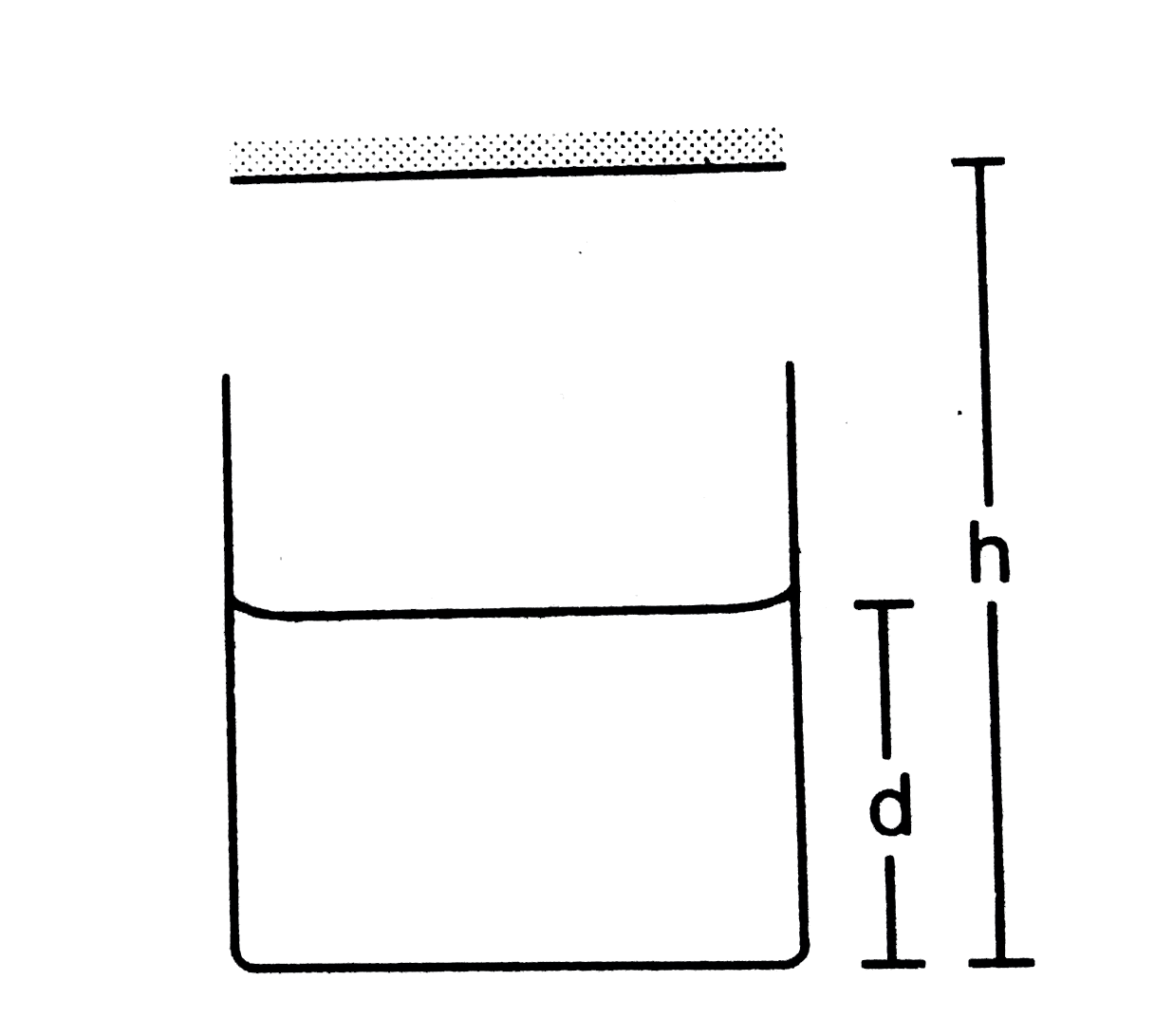 03:12View Solution
03:12View SolutionA beaker contains water up to a height `h_1 ` and K oil above water up to another height `h_2.` Find the apparent shift in the position of the bottom of the beaker when viewed from above. Refractive index of water is `mu_1` and that of K.oil is mu_2`.
02:05View SolutionMonochramatic light is incident on the pane interface AB between two media of refractive indices `mu_1` and `mu_2(mu_2gtmu_1)` at an angle of incidence theta as shown in figure. The angle theta is infinitesimally greater thannte critical angle for the two media so thast total internal reflection takes place. Now, if a transparent slab DEFG of uniform thickness and of refractive inde `mu_2` is introduced on theinterface (as shown in figure ) , show that for any value of `mu_2` all light will ultimately be reflected back into medium II.
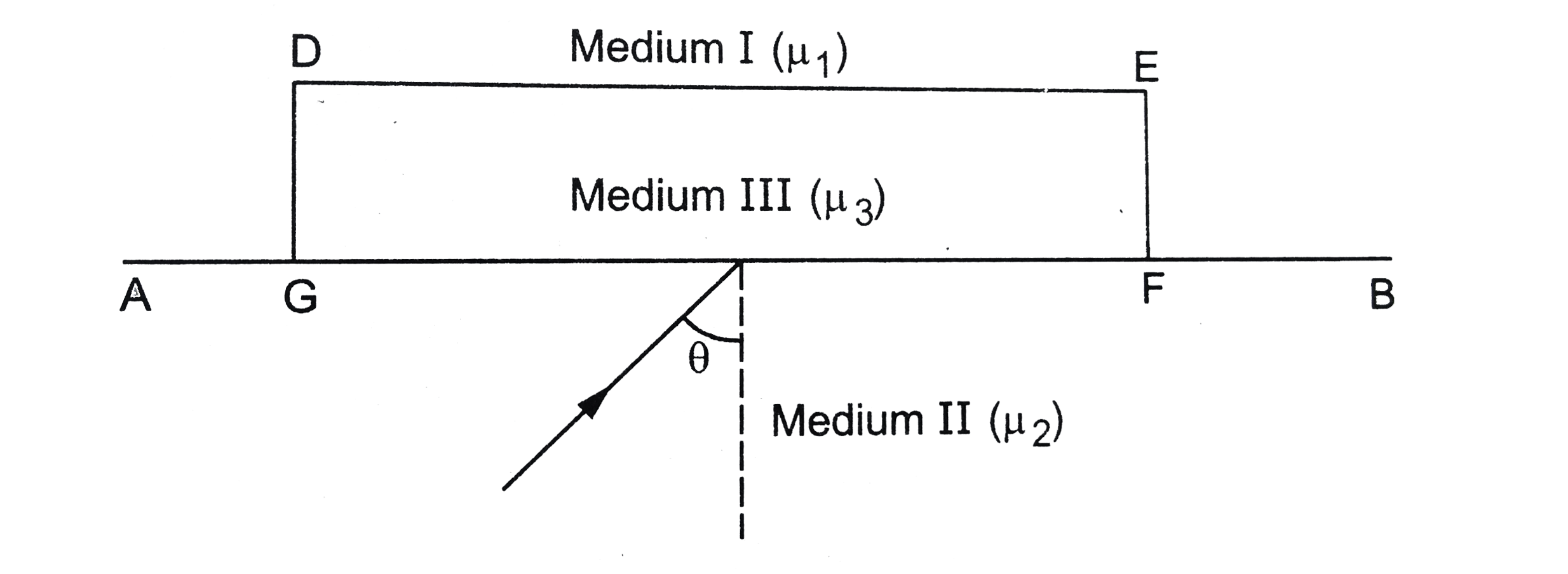 04:00View Solution
04:00View SolutionA concave mirror of radius 40 cm lies on a horizontal table and water is filled in it upto a height of 5.00 cm. A small dust particle floats on the water surface at a point P vertically above the point of contact of the mirror with the table. Locate the image of the dust particle as seen from a point directly above it. the refractive index of water is 1.33.
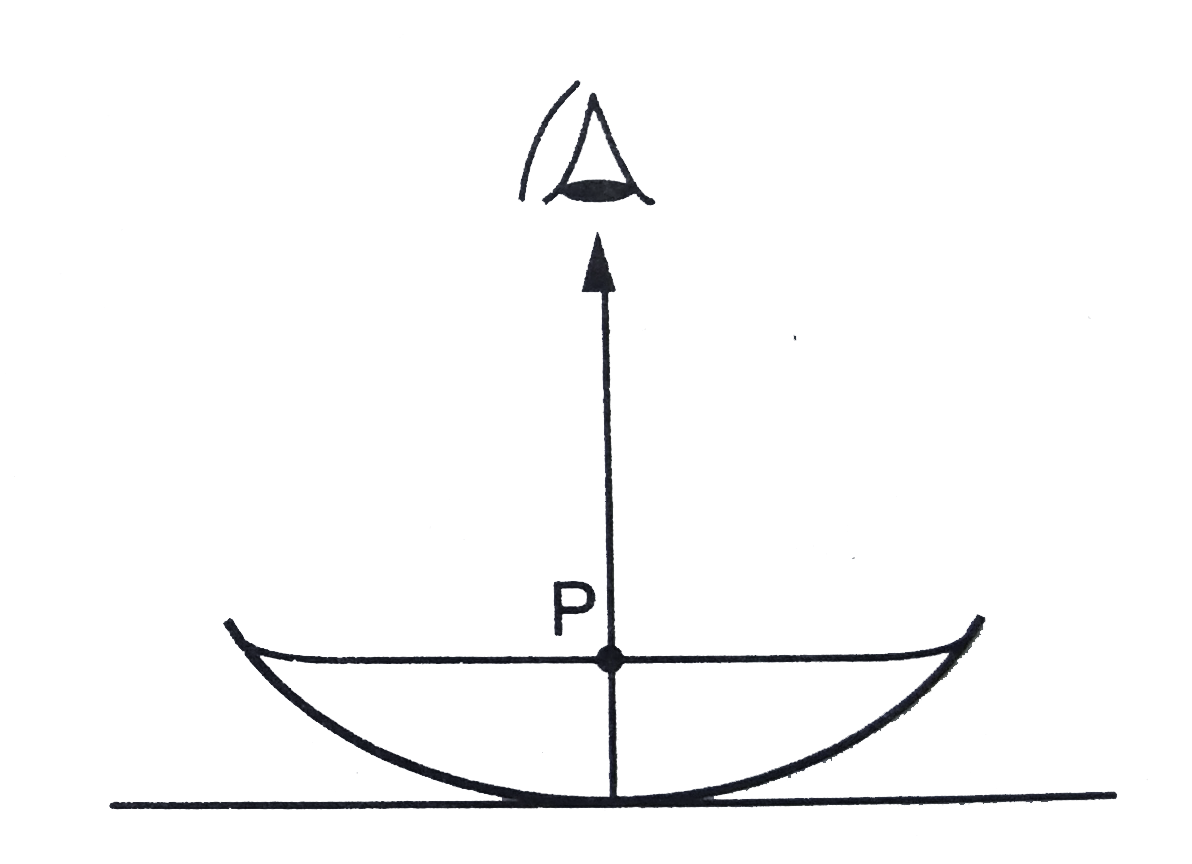 03:35View Solution
03:35View SolutionAn object is placed 21 cm in fron of a concave mirror of radius of curvature 20 cm.A glass slab of thicknes 3 cm and refractive index 1.5 is palced close to the mirror in the space between the object and the mirror. Find the position of the final image fromed. The distance of the nearer surface of the slab from the mirror is 10 cm.
 05:09View Solution
05:09View SolutionThe refractive indices of silicate fint glass for wavelength 400 nm and 700 nm are 1.66 aned 1.61 respectively. Find the minimum angles of deviation of an equailateral prism made of this glass for light of wavelength 400 nm and 700 nm.
02:37View SolutionConsider the situation shown in figure. Light from a point source S is made parallel by a convex lens L. The beam travels horizontally and falls on an `88^@-88^@-4^@` prism as shown in figure. It passes through the prism symmetrically. The transmitted light falls on a vertical mirror. Through what angle should the mirror be rotated so that an image of S is formed on S itself?
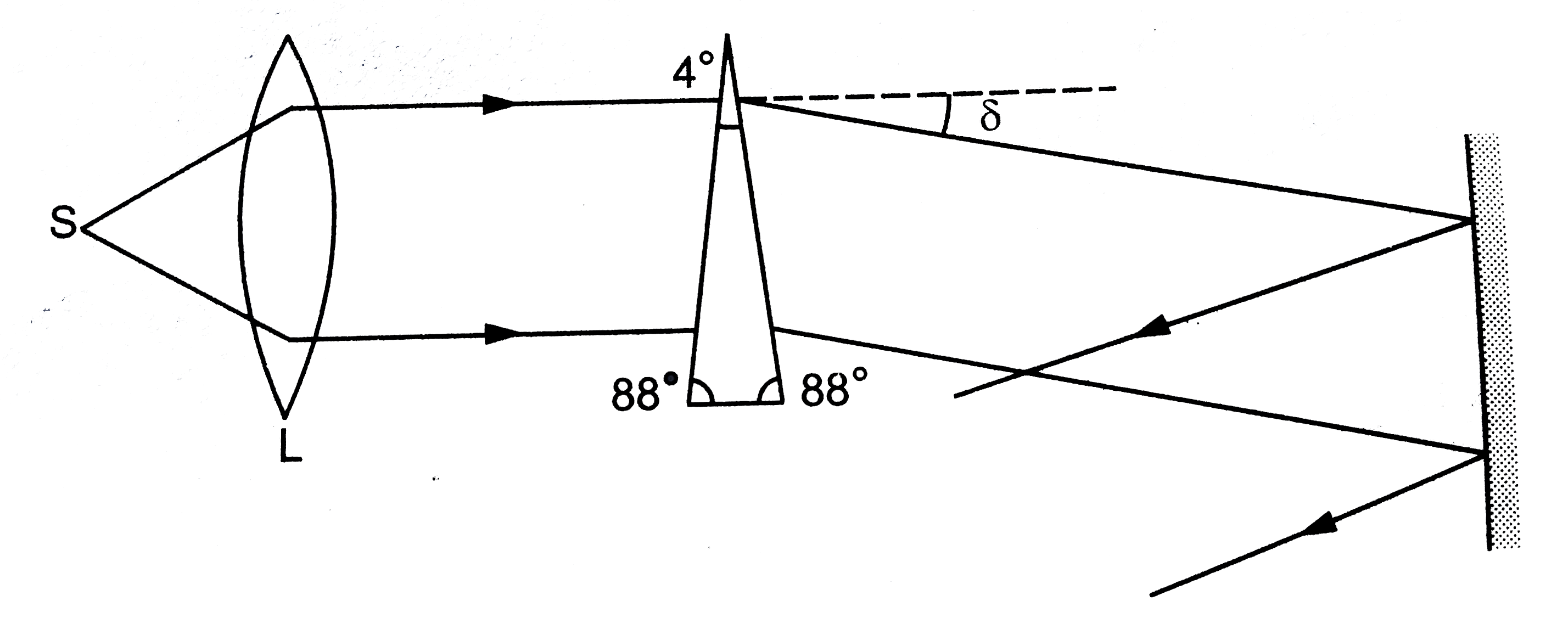 03:41View Solution
03:41View SolutionLocate the image formed by refraction in the situation shown in figure. The point C is the centre of curvature
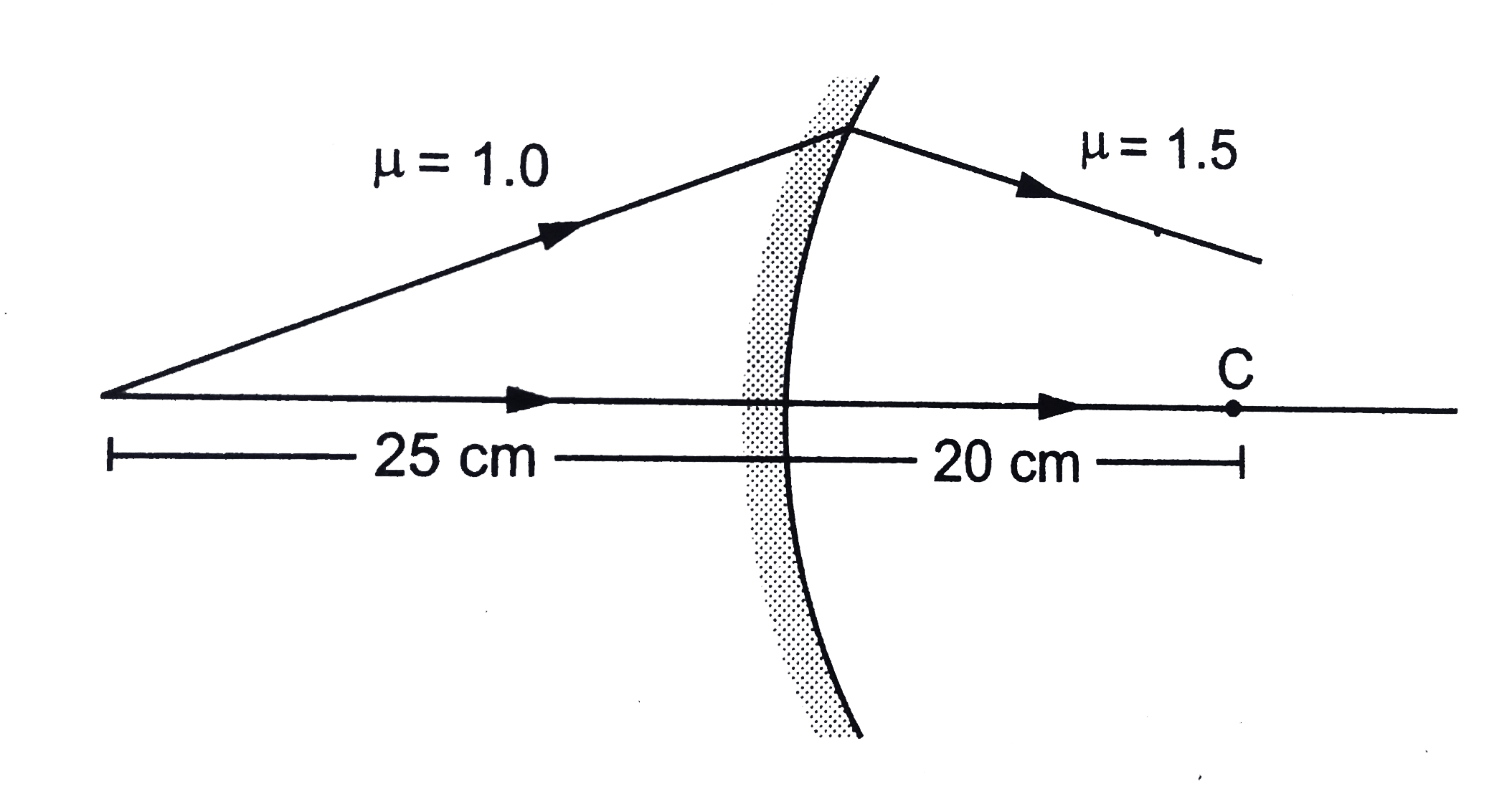 04:07View Solution
04:07View SolutionOne end of a horizontal cylindrical glass rod `(mu=1.5)` of radius 5.0 cm is rounded in the shape of a hemisphere. An object 0.5 mm high is placed perpendicular to the axis of the rod at a difference of 20.0 cm from the rounded edge. Locate the image of the object and find its height.
06:09View SolutionThere is a small air bubble inside a glass sphere `(mu=1.5)` of radius 10 cm. The bubble is `4.0cm` below the surface and is viewd normally from the outside. Find the apparent dipth of the bubble.
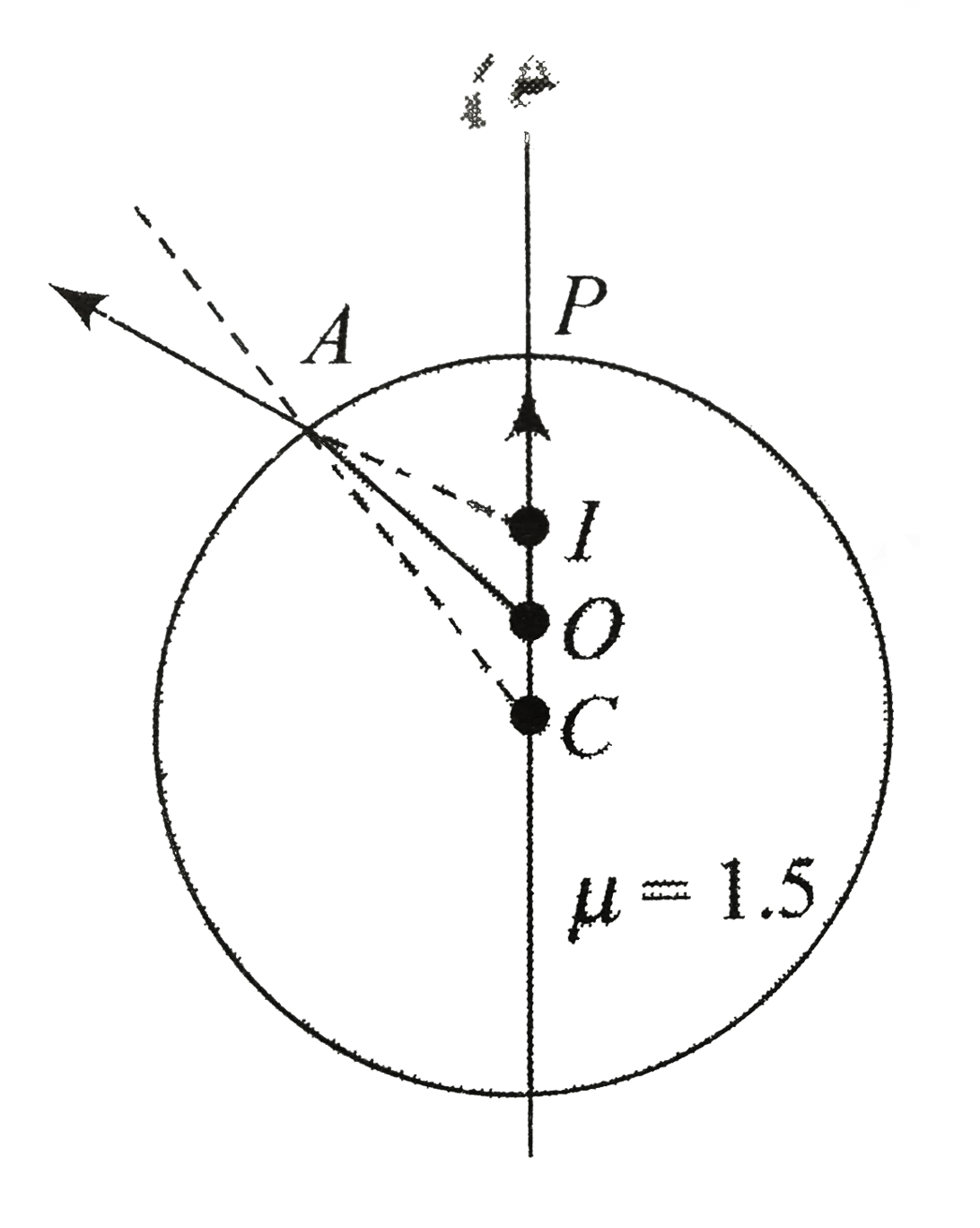 01:18View Solution
01:18View SolutionA parallel bean of light travelling in water (refractive index = 4/3) is refracted by a spherical bubble of radius 2 mm situation in water. Assuming the light rays to be paraxial. i. find the position of the image due to refraction at the first surface and the position of the final image, and ii. draw a ray diagram showing the positions of the images.
03:33View SolutionCalculate the focal length of the thin lens shown infigure. The pionts `C_1 and C_2` denote the centres of curvature.
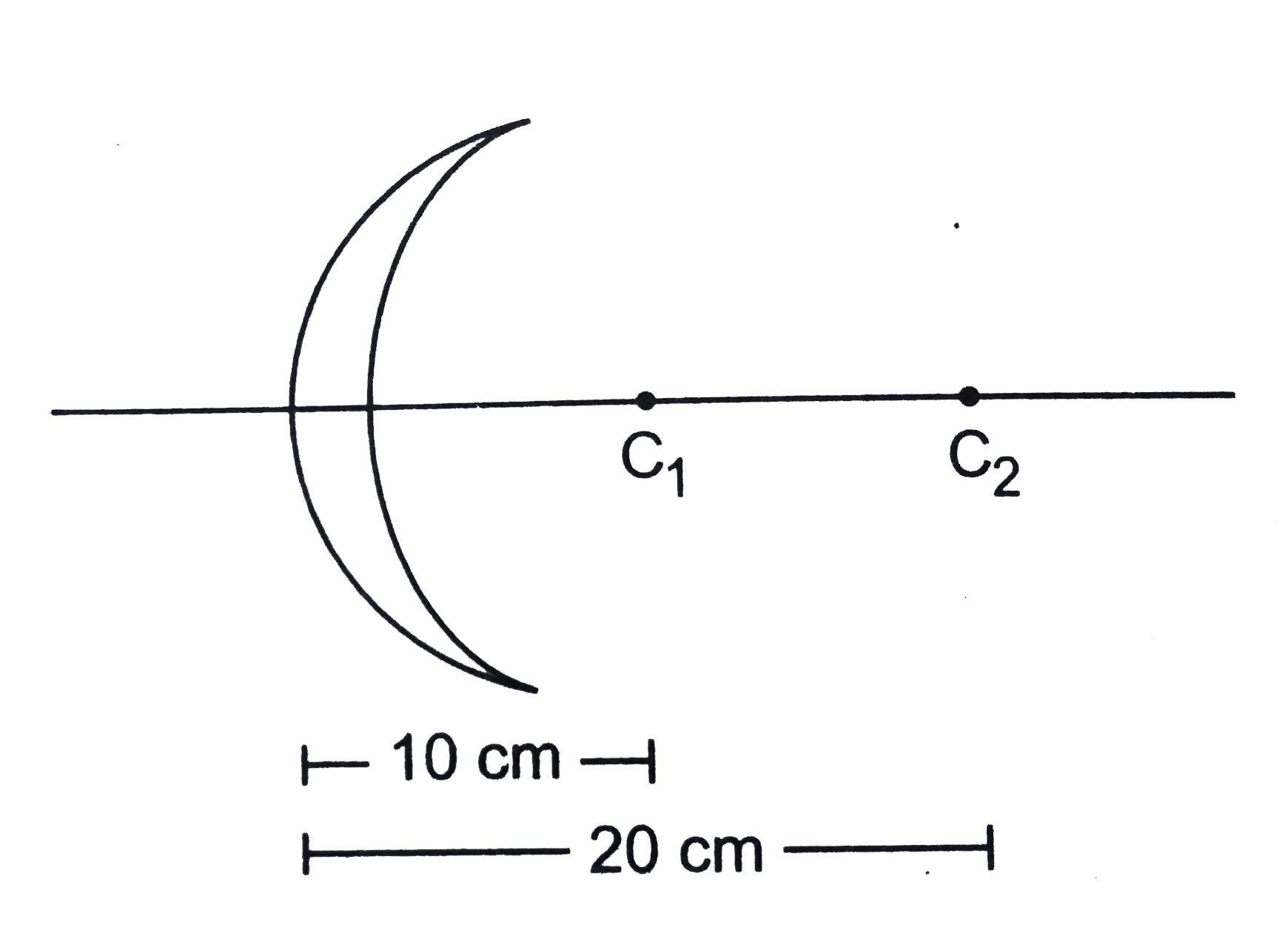 02:03View Solution
02:03View SolutionA point source S is placed at a distance of 15 cm from a converging lens of focal length 10 cm on its principal axis. Where should a diverging miror of focal length 12 cm be placed to that a real image is formed on the source itself.
06:56View SolutionA converging lens of focal length 15 cm and a converging mirror of focal length 20 cm are placed with their principal axes coinciding. A point source S is placed on the principal axis at a distance of 12 cm from the lens as shown in figure. It is found that the final beam comes out parallel to the principal axis. Find the separation between the mirror and the lens.
 02:09View Solution
02:09View SolutionA biconvex thin lens is prepared from glass `(mu=1.5)`, the two bounding surfaces having equal radii of 25 cm each. One of the surfaces is silvered from outside to make it reflecting. Where should an object be placed before this lens so that the image is formed on the object itself?
 04:37View Solution
04:37View SolutionA concave convex figure lens made of glas `(mu=1.5)` has surface of radii 20 cm and 60 cm. a. Locate the image ofan object placed 80 cm to the left of the lens along the principal axis. B. A similar lens is placed coaxially at distanc of 160 cm right of it. Locate the position of the image.
 02:58View Solution
02:58View SolutionA thin lens of focal length + 12 cm is immersed in water `(mu = 1.33).` What is its new focal length ?
03:19View SolutionA long cylindrical tube containing water in closed by an equinvex lens of focal length 10 cm in air. A point source is placed along the axis of the tube outside it at a distance of 21 cm from the lens. Locate the final image of the source. Refractive index of the materials of the lens `=1.5 ` and that of water `=1.33.`
04:12View SolutionA slide projector produces 500 times enlarged image of a slide on a screen 10 m away. Assume that the projector consists of a single convex lens used for magnification. If the screen is moved 2.0 m closer, by what distance should the slide be moved towards or away from the lens so that the image remains focused on the screen ? What is the magnification in this case ?
03:32View SolutionA convex lens focusses an object 10 cm from it on a screen placed 10 cm away from it. A glass plate `(mu=1.5)` of thickenss 1.5 cm is inserted between the lens and the screen. Where should the object be placed so that its image is again focussed on the screen?
03:46View SolutionTwo convex lenses f focal length 20 cm each are placed coaxially with a separation of 60 cm between them. find the image of a distance object formed by the combination by a. using thin les formula separately for the two lenses and b. using the equivalent lens. Note that although the combination forms a real image of as distance object on the other side, it is equivalent to as diverging lens as far as the locatiion of the final image is concerned.
06:55View Solution
Worked out Examples questions and complete solutions for chapter GEOMETRICAL OPTICS of HC VERMA of Class 12
